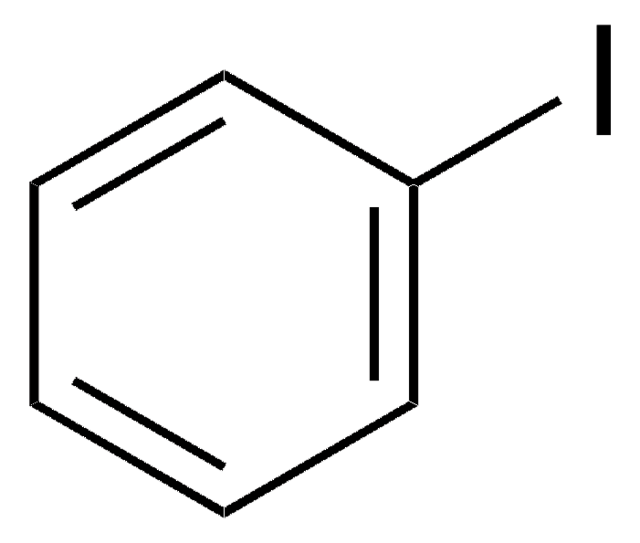Wszystkie zdjęcia(1)
Kluczowe dokumenty
About This Item
Wzór liniowy:
Cl2C6H3I
Numer CAS:
Masa cząsteczkowa:
272.90
Numer WE:
Numer MDL:
Kod UNSPSC:
12352100
Identyfikator substancji w PubChem:
NACRES:
NA.22
Polecane produkty
Poziom jakości
Próba
98%
mp
27-29 °C (lit.)
grupa funkcyjna
chloro
iodo
ciąg SMILES
Clc1ccc(I)cc1Cl
InChI
1S/C6H3Cl2I/c7-5-2-1-4(9)3-6(5)8/h1-3H
Klucz InChI
NADPFZNWCQIJJW-UHFFFAOYSA-N
Szukasz podobnych produktów? Odwiedź Przewodnik dotyczący porównywania produktów
Opis ogólny
3,4-Dichloroiodobenzene undergoes Stille coupling reaction with vinyltributyltin in the presence of Pd(0)precursors to furnish styrene derivative.
Zastosowanie
3,4-Dichloroiodobenzene may be used in the preparation of:
- tetrachloromethoxybiphenyls
- 1-(3,4-dichlorophenyl)-2-trimethylsilylacetylene
- 2-(3,4-dichlorocinnamyl)isoindoline-1,3-dione
Ta strona może zawierać tekst przetłumaczony maszynowo.
Kod klasy składowania
11 - Combustible Solids
Klasa zagrożenia wodnego (WGK)
WGK 3
Temperatura zapłonu (°F)
Not applicable
Temperatura zapłonu (°C)
Not applicable
Środki ochrony indywidualnej
Eyeshields, Gloves, type N95 (US)
Wybierz jedną z najnowszych wersji:
Masz już ten produkt?
Dokumenty związane z niedawno zakupionymi produktami zostały zamieszczone w Bibliotece dokumentów.
Synthesis and properties of various poly (diphenylacetylenes) containing tert-amine moieties.
Katsumata T, et al.
Polymer, 49(12), 2808-2816 (2008)
Identification of chlorinated methoxybiphenyls as contaminants in fish and as potential interferences in the determination of chlorinated dibenzo-p-dioxins.
D W Phillipson et al.
Analytical chemistry, 52(14), 2328-2332 (1980-12-01)
Cara A Mosley et al.
Bioorganic & medicinal chemistry, 17(17), 6463-6480 (2009-08-04)
The synthesis and structure-activity relationship analysis of a novel class of amide-based biaryl NR2B-selective NMDA receptor antagonists are presented. Some of the studied compounds are potent, selective, non-competitive, and voltage-independent antagonists of NR2B-containing NMDA receptors. Like the founding member of
Leonardo S Santos et al.
The Journal of organic chemistry, 72(15), 5809-5812 (2007-06-26)
On-line monitoring of Stille reactions was performed via direct infusion electrospray ionization mass spectrometry (ESI-MS) and its tandem version (ESI-MS/MS). When operated in the positive ion mode, ESI(+)-MS was able to transfer, directly from solution to the gas phase, the
Nasz zespół naukowców ma doświadczenie we wszystkich obszarach badań, w tym w naukach przyrodniczych, materiałoznawstwie, syntezie chemicznej, chromatografii, analityce i wielu innych dziedzinach.
Skontaktuj się z zespołem ds. pomocy technicznej